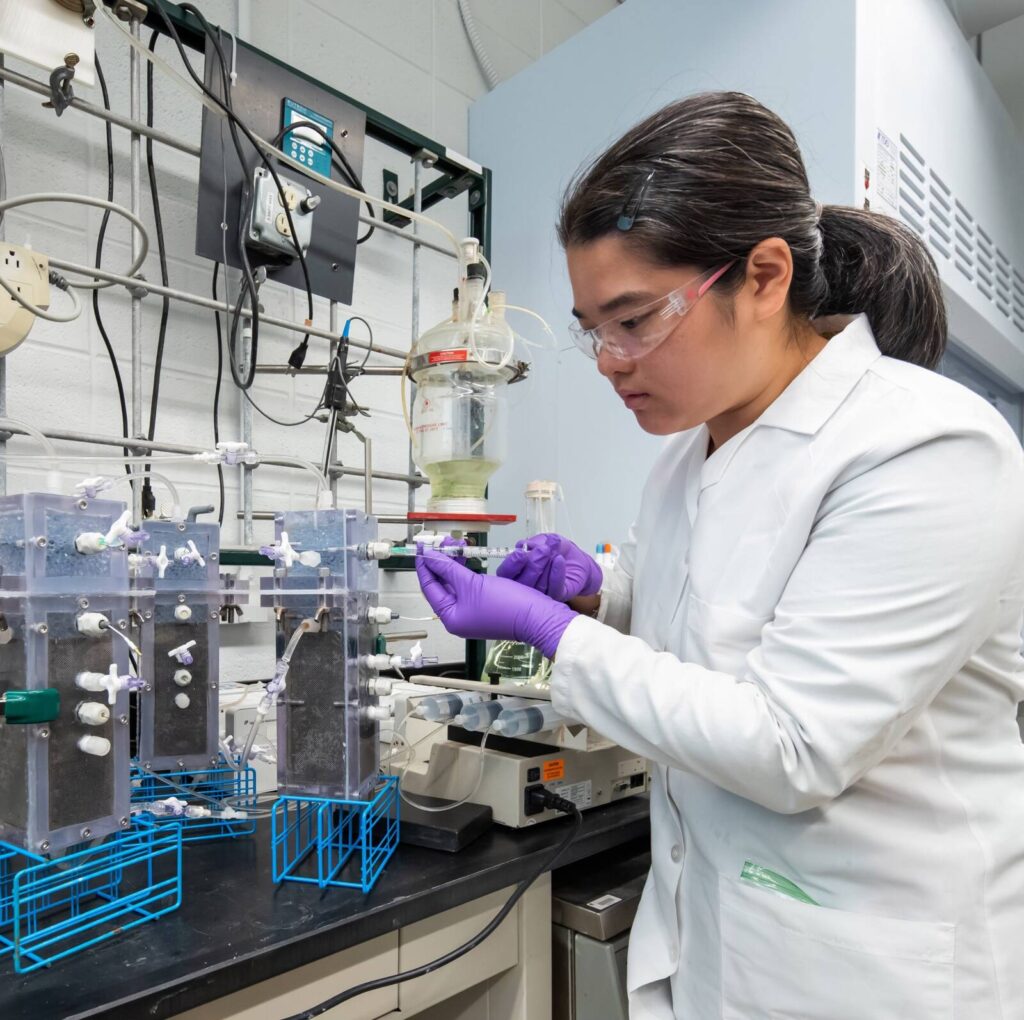Last spring semester, I was completing my junior independent work in a bioengineering lab on campus. My project was lab-heavy, as I was investigating the extent of DNA damage (measured as type and frequency of breaks occurring in the DNA) that occurs in persister subpopulations (cell populations with non-inherited tolerance to antibiotics) of E.Coli cells when treated with antibiotics and other DNA damaging agents. I had prepared a series of experiments to test these conditions, most of which would be performed after returning from spring break. However, those plans changed in March, when students were sent home due to the COVID-19 pandemic.
Like many other lab researchers, I was left with incomplete experiments and an upcoming deadline to present my work. Independent research for the chemical and biological engineering (CBE ) department is only one semester long, and I spent most of the first half of the semester doing literature review, planning experiments and learning lab techniques. With only eight weeks left before my final paper and presentation deadline, I worried about the possibility of having to change my entire research topic into something that could be completed remotely. However, along with the lead researcher of the lab, or principal investigator (PI), and graduate student mentor, we developed a plan to easily transition the project I had already been working on into a remote project. In this post, I will give tips on how to conduct laboratory research remotely.

Analyze Sample Data From Other Authors
A major portion of my project focused on obtaining cell growth data on multiple strains of E.coli under different concentrations and types of antibiotics. After transitioning to a remote semester, I was unable to finish all of my experiments. However, the authors from a paper I read attempted to quantify an average number of DNA breaks per cell in yeast cells containing induced DNA damage, thus they performed experiments and collected data that was similar to what I would have obtained. Although their research had significant differences relative to my project- for instance using yeast cells and inducing DNA damage with factors other than antibiotics- their quantification model and raw data were still useful for characterizing DNA breaks, something required for my project. Thus, after requesting data access from the authors, I was able to test this data and confirm whether my quantification methods for DNA breaks were accurate. Given the nature of collaboration in research, researchers will be willing to share raw data and software that has been generated for further research purposes and analysis. By using sample data from other authors, one can confirm whether different methods of analysis also result in similar conclusions.
Run Simulations
MATLAB programs, such as Simulink and other independent applications, as well as other software allow for simulations of a wide variety of testing conditions, which may be combined with the sample data analysis. For example, for CBE core lab last spring, we received raw data for a mixing experiment and used Simulink simulations to make predictions and to test the conditions that were used for the sample data. Likewise, an antibiotics class I am taking this semester created a simulator to be used for predictions of successful antibiotic treatments in killing bacteria. The use of simulations in remote research is especially beneficial due to its ability to test a large number of conditions in a short period of time. Thus, if applications or software exist that may be applicable to your research, simulations can add significant value to data analysis.
Build Experiments With Your Mentors
Your research mentors and other members in your lab may be working on projects that are similar to your own, and thus the data from experiments they conduct may also be applicable to your research. In that case, it is beneficial to discuss the experiments that your mentor is planning to conduct, and discuss what parameters or trials may also contribute to your project. As mentioned, scientific research is collaborative, thus other lab members will likely be willing to build their experiments by taking into account any trials or parameters that are specific to your project.
—
Conducting laboratory research remotely is limiting, as you may not be able to physically conduct experiments. However, between simulations, virtual laboratory tools and with access to sample data from other researchers, a lab-heavy project can successfully be conducted remotely. If you find yourself in this situation, speak with your adviser to discuss ways in which you can make the most of remote tools for your specific project.
–-Saira Reyes, Engineering Correspondent

